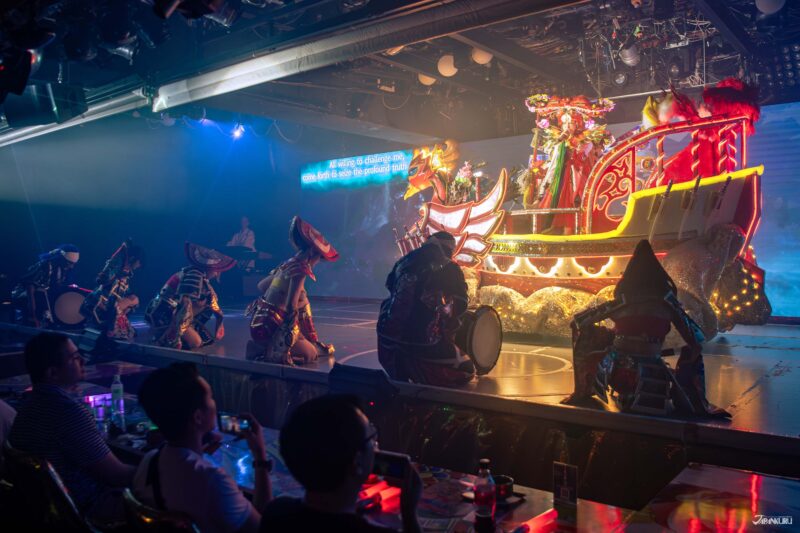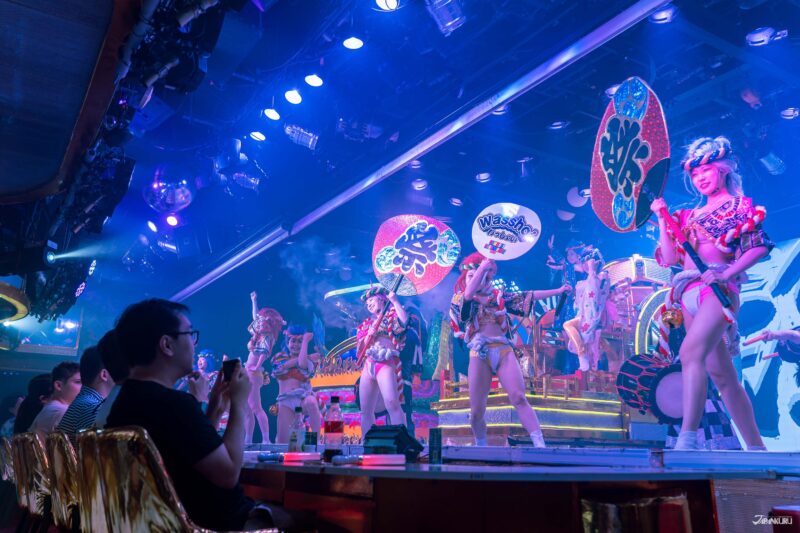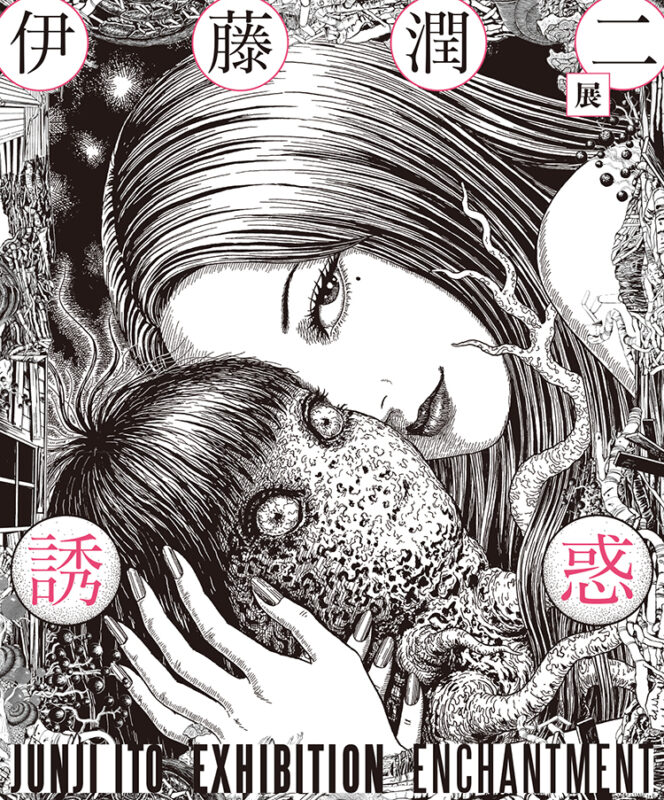
Try Tokyo’s Samurai Restaurant Time for All the Outrageous Japanese Entertainment You Can Handle ★ 2024 Samurai Restaurant Coupon Included!
This article contains sponsored content.
This wild show in Shinjuku is the successor to the famous Shinjuku Robot Restaurant, which means it's got as much exaggerated Japanese entertainment as you can pack into an afternoon, plus some exciting new samurai-themed surprises. Use our Samurai Restaurant Coupon for a great deal on this unique experience!
CONTENTS
The Samurai Restaurant: Tokyo Entertainment on a New Level

Imagine the Tokyo of your wildest dreams: kimono-clad figures straight from the kabuki stage, glowing neon lights like a sci-fi movie, the beating of taiko drums, and the never-ending waves of people mingling at Shibuya crossing. Visitors arriving in Tokyo might find the everyday reality of the city to be a little different from the Tokyo of their imaginations, but it turns out this kind of over-the-top Japanese culture isn’t just a daydream – you’ll find it all at the Samurai Restaurant in Shinjuku.



As the latest performance and entertainment experience from many of the same producers behind the old Shinjuku Robot Restaurant, this dazzling spectacle is a fever dream of samurai drama, choreographed dance routines, flashy costuming, traditional Japanese tunes with a futuristic twist, and Japanese culture pushed beyond its limits. The people behind the Samurai Restaurant make it a point to keep the experience changing and evolving from one day to the next, always pushing the show to become more outrageously Japanese and uniquely entertaining, and reimagining what a “Samurai Restaurant” could be. So this summer the Japankuru team headed over to Shinjuku to check out the latest edition of the Samurai Restaurant. Here’s what we found!
This Summer’s Samurai Restaurant Time Highlights
A Show You Can See, Hear, and Feel



The latest version of the Samurai Restaurant show begins with the beating of taiko drums, a deep sound that echos in your ears, and thrums throughout your body. You might be tempted to pull your phone out and start taking snapshots the moment the curtain rises, but we recommend you take a moment to enjoy the first part of the show without any screens in between you and the performers. As the drumming starts to heat up, and teams of drummers begin to weave across the stage, you can feel the enthusiasm of the performers rise to an infectious crescendo. If you want some spectacular pictures, we think you’ll be pretty satisfied with the waves of gigantic roving Japanese yokai monsters that appear on stage next, or the battling teams of dancers dressed as gods and demons!
Japanese History, Gone a Little Crazy


One of the things that the Samurai Restaurant has been experimenting with since its establishment is how to introduce Japan’s real history of samurai and sword fights into a show that focuses more on the fantastical. We think that this time they nailed it, with a raucous series of fight scenes inspired by some real stories and notable figures from Japan’s historical record, injected with plenty of magical powers and godly forces who come to interject. If you can figure out exactly what historical battles are being referenced in the show this year, though, your Japanese history knowledge (and lateral thinking) might be better than ours.
Interactive Fun, Tasty Treats



Watching the scintillating spectacle of Samurai Restaurant Time is exciting enough, but joining in on the fun is even better! It was obvious to the Japankuru team that if the producers at the Samurai Restaurant are working on one thing in 2024, it’s clearly interactivity. From the start, English-speaking staff are now available to help get foreign visitors involved, a process that starts before the performers set foot on stage. A cup of Japanese sake is now included in the ticket price so that everyone can join in on a toast – a “kanpai” to all the excitement to come in the next hour and a half! Chosen at random, one lucky table gets a free bucket of popcorn – hand-delivered by a sparkly red ninja, of course. At intermission mid-way through the show, waiters come around with bowls of green tea and traditional Japanese sweets for all, inviting guests to enjoy the break time the traditional Japanese way – tea time. (We thought the little miniature taiyaki cakes filled with red bean were adorable.) In the second half of the performance, the audience call-and-response becomes a vital part of the show, cheering the performers on to a grand finale. You can get as into it as you want – we recommend whole-hearted participation.
What’s New: Visiting the Samurai Restaurant in 2024
Pure, Undiluted Samurai Fun




In our opinion, the Samurai Restaurant Time experience feels tighter and more polished than ever. When the brand new Samurai Restaurant was busy finding its place last year, and taking up the mantle of the old Robot Restaurant, the producers turned the show into a longer experience with more space to experiment, and they used the extra time to push the show in new directions, developing all the features that define “Samurai Restaurant Time.” This summer, the whole experience is still in a constant state of change, but the producers have succeeded in condensing the show into a shorter, more dynamic performance that slots more easily into the average travel schedule.

Minutes after guests arrive, drink orders are taken and pre-ordered bento boxes are served to tables, so the performance can start as soon as everyone is settled. The dances, sword fights, and dramatic theatrics of Samurai Restaurant Time are broken up into shorter sections lasting perhaps 5 to 15 minutes each, with short breaks in between. We suspect the performers are probably dashing to and fro backstage to complete the complicated costume and set changes as quickly as possible, because the breaks aren’t particularly long, but it’s just enough time to chat with your friends in between the noisy fun and chaos of each segment. Altogether, Samurai Restaurant Time now lasts about 100 minutes from start to finish, and when you climb back up the glittering stairs from the Gira Gira Girls venue and emerge out into the questionably fresh air of Shinjuku’s Kabukicho neighborhood, it feels a little like emerging from a wormhole out of an alternate universe. Samurai Restaurant Time is really out of this world.
New Restaurant Menu Options

Since the start, the Samurai Restaurant has taken the title of “restaurant” a little more seriously, offering both bento boxes and simple hot food options made in-house. This summer, the food is looking better than ever! The new addition of a sukiyaki-style beef bowl bento (with beef simmered in a sweet and savory sauce and served on a bed of white rice) offers a solid third option next to the “Samurai Sushi Bento” and the box of Japanese-style small bites. When it comes to food you can order once you arrive, the takoyaki (delicious Japanese octopus balls) and handmade pizza pockets caught our eye amongst the savory options, and next time we visit we’ll definitely be ordering a dish of the water-cake-style warabi mochi for dessert! As the Samurai Restaurant settles in and finds its place, it looks like the restaurant options are shifting to better fit guests’ needs.
Practical Scheduling & Tickets

The Samurai Restaurant still shares a venue with the bar Gira Gira Girls, which is why tickets are sold for “Samurai Restaurant Time,” and entrance is limited to guests who are 18 and older. This summer’s new time slots, however, probably make it easier for busy sightseers to fit some Samurai Restaurant Time into a packed Tokyo itinerary. There are currently three show times every day*, to suit different schedules: 10:50 ~ 12:30 / 14:00 ~ 15:40 / 16:30 ~ 18:10. Since each ticket comes with either a light meal (a bento box/ramen/udon) or a couple of drinks, guests can choose a heartier food option to enjoy as lunch or dinner, or eat elsewhere and get some light refreshments at the Samurai Restaurant.
*Only the two later shows are offered on some Sundays.

Ticket prices for the afternoon shows haven’t changed (10,000 yen at the door), but we were intrigued to see that tickets for the new early show (starting at 10:50) are actually priced a bit cheaper at only 8,000 yen per person. If you like a little excitement in your morning routine, this Samurai Restaurant time slot is a great deal. When you think about it, whether you spend 8,000 or 10,000 yen per ticket, the price not only includes a spectacular hour and a half of entertainment, but also a full meal, surprise treats like green tea and taiyaki, and even a generous cup of Japanese sake. Not too shabby!
Tickets are easily purchased online via the official reservation page, and if seats are still available, you can get them at the door as well. If you use the Japankuru coupon on your Samurai Restaurant ticket, tickets are an even better deal – check out the discount options below.
▶︎ Samurai Restaurant Time Reservation Page
Get Your Samurai Restaurant Time Discount Coupon

Looking for a great price on your Samurai Restaurant ticket? We’ve got the best deal around! The exact coupon details depend on how you buy your ticket. Purchase your ticket day-of, at the door, and you can show the Japankuru coupon (above) for a 1,000 yen discount on each ticket. If you purchase a ticket online instead (from the official Samurai Restaurant Time page), the price is automatically discounted by 1,000 yen even before the coupon. So if you got your tickets online, you can present the coupon at the door to receive two extra drink tickets instead! The very best deal is to purchase an online ticket for the early show at the Samurai Restaurant and use the coupon when you arrive. For 7,000 yen you get the full Samurai Restaurant Time experience plus two extra drinks! It’s worth using the coupon no matter what your plans look like, though – even last minute, it’ll help you get the best possible deal.
▶︎ See the Samurai Restaurant Time coupon page for details.
Don’t Miss Tokyo’s Hottest Show of the Summer

You often hear that Japan is a unique mix of old and new, ancient traditions and cutting-edge technology, refined elegance and kawaii culture so cute and colorful that it’s hard to find anywhere else. But nowhere is that chaotic cultural clash more obvious than at the Samurai Restaurant in the heart of Shinjuku! If you want to see everyday Tokyo, look elsewhere, because Samurai Restaurant Time is all about pushing Japanese culture to its limits and beyond – and it sure is fun to watch! This wild performance is always changing, but we think the Samurai Restaurant is looking better than ever this year, so don’t skip this unique experience during your next trip to Tokyo.

Samurai Restaurant Time at Gira Gira Girls (サムライレストランタイム@ギラギラガールズ)
1-7-7 Kabukicho, Shinjuku-ku, Tokyo
Official Website (en) | Instagram | X (Twitter)
For more info and updates from Japan, check Japankuru for new articles, and don’t forget to follow us on X (Twitter), Instagram, and Facebook!
COMMENT
FEATURED MEDIA
VIEW MORE
A Tokyo Winter Must-See: Tokyo Mega Illumination Event Period: November 2, 2024 ~ January 12, 2025 *Closed Nov 4~8, Dec 1~6, Dec 25~ Jan 1. End date may be subject to change. Hours: 16:30 – 21:00 (final admission 20:00) *Opening hours may vary depending on scheduled events or congestion, please check the official website for details. Directions: 2 min. walk from Tokyo Monorail Oikeibajo-Mae Station, 12 min. walk from Keikyu Tachiaigawa Station #japankuru #tokyowinter #tokyomegaillumination #megaillumination2024 #tokyocitykeiba #도쿄메가일루미네이션 #tokyotrip #oiracecourseillumination

Tokyo Shopping Spot Recommendation: New Balance Kichijoji #newbalance #newbalancekichijoji #newbalancejapan #japanesesneakerheads #shoppinginjapan #japantrip #도쿄여행 #도쿄쇼핑 #뉴발란스 #일본한정 #일본패션 #日本購物 #日本買衣服 #NB #日本時尚 #東京購物 #รองเท้าnewbalance #นิวบาลานซ์ #รองเท้าผ้าใบ #ช้อปปิ้ง #คิจิโจจิ #japankuru

See Kyoto Clearly With Your New Glasses #japankuru #kyoto #jins #교토여행 #진즈 #京都 #교토수족관 #가모가와 #kamogawa #kyotoaquarium

The First Japanese Converse Flagship: CONVERSE STORE HARAJUKU #japankkuru #conversejp_pr #conversejapan #harajuku #tokyotrip #converse #tokyoshopping #匡威 #帆布鞋 #東京購物 #原宿 #日本時尚 #일본쇼핑 #일본컨버스 #일본한정 #하라주쿠 #일본패션 #일본스트릿 #รองเท้าconverse #รองเท้าผ้าใบ #ช้อปปิ้ง #ฮาราจูกุ #คอนเวิร์ส

Japanese Makeup Shopping • A Trip to Kamakura & Enoshima With Canmake’s Cool-Toned Summer Makeup #pr #canmake #enoshima #enoden #에노시마 #캔메이크 #japanesemakeup #japanesecosmetics

⚔️The Robot Restaurant is gone, but the Samurai Restaurant is here to take its place. Check it out, and don't forget your coupon! 🍣신주쿠의 명소 로봇 레스토랑이 사무라이 레스토랑으로 부활! 절찬 쿠폰 발급중 💃18歲以上才能入場的歌舞秀,和你想的不一樣!拿好優惠券去看看~ #tokyo #shinjuku #samurairestaurant #robotrestaurant #tokyotrip #도쿄여행 #신주쿠 #사무라이레스토랑 #이색체험 #할인이벤트 #歌舞伎町 #東京景點 #武士餐廳 #日本表演 #日本文化體驗 #japankuru #japantrip #japantravel #japanlovers #japan_of_insta

Japanese appliance & electronics shopping with our KOJIMA x BicCamera coupon! 用JAPANKURU的KOJIMA x BicCamera優惠券買這些正好❤️ 코지마 x 빅 카메라 쿠폰으로 일본 가전 제품 쇼핑하기 #pr #japankuru #japanshopping #kojima #biccamera #japaneseskincare #yaman #dji #osmopocket3 #skincaredevice #日本購物 #美容儀 #相機 #雅萌 #日本家電 #일본여행 #면세 #여행꿀팁 #일본쇼핑리스트 #쿠폰 #일본쇼핑 #일본브랜드 #할인 #코지마 #빅카메라 #japankurucoupon

Odaiba's DiverCity Tokyo Plaza is home to the famous real-size 20m-tall Unicorn Gundam, and the popular shopping center has even more Gundam on the inside! Check out the Gundam Base Tokyo on the 7th floor for shelves upon shelves of Gunpla, and the Gundam Base Tokyo Annex on the 2nd floor for cool anime merchandise. Both shops have tons of limited-edition items! #pr #odaiba #tokyo #tokyotrip #japantrip #japantravel #PR #divercity #divercitytokyoplaza #tokyoshopping #gundam #unicorngundam #gundambasetokyo #anime #otaku #gunpla #japankuru #오다이바 #다이바시티도쿄 #오다이바건담 #건담 #일본건담 #건프라 #건담베이스도쿄


























































